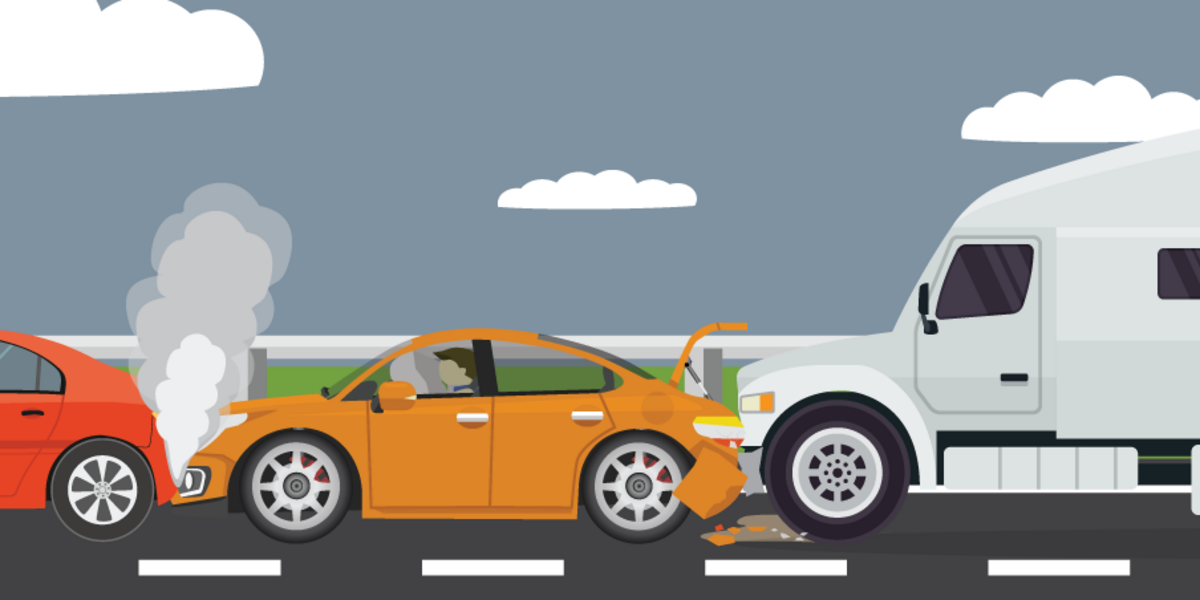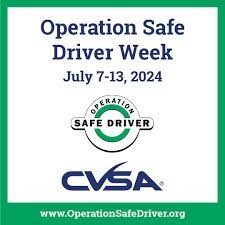A few weeks ago, we had an officer of the Oregon State Patrol give a presentation at our Peterson Idealease safety seminar in Portland. Although the officer was young, he had already investigated more fatal accidents than anyone should ever be exposed to. The focus of his presentation was the Fatal 5 (SOLID). Through his investigations, he determined that Fatal 5 (SOLID) was responsible for most of the fatal accidents he investigated.
The Fatal 5 (SOLID)
- Speed (S)
- Occupant Protection (O)
- Lane Use (L)
- Impairment (I)
- Distraction (D)
Let’s look at each one of these:
Speed
Miles per hour vs. feet per second. 1 MPH =1.466 FPS. Multiplying MPH by 1.466 will give you FPS at your MPH. At 65 MPH, you are traveling at 95 FPS. Now, we use speed or velocity along with the mass of the unit to determine Kinetic Energy.
KE = ½mv2 where m is mass and v is velocity. Parking lot speeds vs highway speeds is a big difference in Ke. Ke increases incrementally as speed increases.
Occupant Protections
Seat Belts are the primary technology used today in commercial motor vehicles (CMV) for occupant protection. However, as we discussed in the May 17 Idealease Safety Bulletin, in 2022, 916 commercial truck drivers lost their lives in crashes and of those, 635 (69.3%) were not wearing seat belts.
In every motor vehicle crash, three crashes take place:
- The Vehicle
- The Occupants
- The Internal Organs
Inertia- An object in motion will remain or at rest until acted upon by an outside force.
Lane Safety
Roadway departures are quickly becoming a leading cause of CMV Crashes.
Lane warning departure technology and rumble bars are helping, but distraction is getting the upper hand.
Impairment
Many substances cause impairment, ranging from over-the-counter medications to illicit drugs. When it comes to alcohol and drugs, each person is affected different by these substances.
CMV BAC limit + 0.04
Driver fatigue is also an impairment. Plenty of statistics show that it contributes to accidents when commercial motor vehicles (CMVs) are involved.
Among the informational nuggets from the Federal Motor Carrier Safety Administration (FMSCA)
- The Large Truck Crash Causation Study revealed that 13 percent of CMV drivers were considered to have been fatigued at the time of a crash
- Driver alertness relates more to “time of day” than “time on task”
- Being awake for 18 hours is comparable to having a blood alcohol concentration of 0.08 percent
- A recent study suggested that three out of every four CMV drivers report having experienced at least one type of driving error because of drowsiness.
Distraction
Modern technology has provided convenience and more vehicle distractions over the last ten years.
How many screens do your drivers have to look at in your CIMV? ELD, Radio, GPS, Vehicle Infotainment, Cell Phone? A Utah State University study showed that a driver distracted by a cell phone call reacted similarly to a DUI driver. Due to the vehicle's dynamics in motion, events can happen quickly, and distraction reduces perception/reaction time.
There are several types of driver distraction:
- Visual – taking your eyes off the road. This can include looking for something in the vehicle, using electronic devices, or reading advertising along the road.
- Manual – taking your hands off the wheel. Smoking, eating, and drinking in the vehicle are common manual distractions.
- Auditory—It prevents you from hearing important sounds from outside the vehicle. Driving while wearing headphones, talking to passengers, or playing music loudly falls into this category.
- Cognitive or Mental – takes your mind off driving. Stress significantly contributes to this area as we think about our day and get lost in our thoughts.
CVSA’s Brake Safety Week Scheduled for Aug. 25-31
The Commercial Vehicle Safety Alliance (CVSA) has announced Aug. 25-31 dates for this year’s Brake Safety Week.
Brake Safety Week is a commercial motor vehicle and driver inspection and regulatory compliance enforcement initiative. It serves as both a brake-safety awareness and outreach opportunity and a brake-related inspection and violation data-collection project.
Inspection and Enforcement
CVSA-certified inspectors will conduct routine commercial motor vehicle inspections throughout the week, focusing on brake systems and components. Commercial motor vehicles found to have brake-related out-of-service violations will be removed from roadways until those violations are corrected.
For this year’s Brake Safety Week, inspectors will focus on the condition of brake linings and pads. Brake lining and pad issues may result in vehicle violations and affect a motor carrier’s safety rating.
In addition, some jurisdictions have performance-based brake testers (PBBTs) and will use them during Brake Safety Week. A PBBT is a machine that assesses a vehicle's braking performance.
CVSA’s Operation Safe Driver Week Is Scheduled for July 7-13
The Commercial Vehicle Safety Alliance (CVSA) has announced July 7-13 as the dates for this year’s Operation Safe Driver Week, an initiative aimed at promoting safe driving through enforcement and outreach efforts. Law enforcement personnel in Canada, Mexico, and the U.S. will focus on identifying and addressing unsafe driving behaviors among commercial motor vehicle and passenger vehicle drivers, including speeding, distracted driving, following too closely, and impaired driving.
The primary focus of this year’s Operation Safe Driver Week is reckless, careless, or dangerous driving. Reckless driving refers to operating a vehicle with willful or wanton disregard for the safety of persons or property, while careless or dangerous driving involves operating a vehicle without due care and attention or reasonable consideration for other on the road. Enforcement actions during this week may include warnings or citations for drivers engaging in such behaviors.









